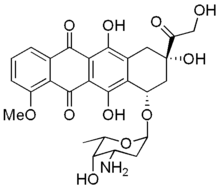Imran T Mohiuddin, MD; Chandeshwar Sharma, PhD; Michael Burnett; Joe B Putnam, Jr. MD and Ara A Vaporciyan, MD(*). Thoraic and Cardiovascular Surgery, UT MD Anderson Cancer Center, Houston, TX.
PURPOSE: Isolated lung perfusion (ILP) with doxorubicin (DR) is being evaluated in both animal models and clinical trials as a method of treating metastatic sarcoma while minimizing the systemic toxicity of DR through organ specific delivery. Although tumor response appeared favorable in animal models clinical trials have been hampered by significant pulmonary toxicity. This study seeks to characterize the extent of acute pulmonary toxicity and neutrophil recruitment as a mediator of that injury.
METHODS: Male Fischer rats underwent isolation of left pulmonary hilar vessels. The pulmonary artery was cannulated and occluded proximally. A venotomy was created in the pulmonary vein and also occluded proximally. Single pass ILP with 10ml of either 0.9% saline or 0.5 mg/ml DR was performed over 20min. The left pulmonary vasculature was flushed pre- and post-perfusion for 5min with saline. After closure the animals were allowed to recover and euthanized at 4, 12, 24 and 48 hrs after ILP. Lungs were processed for histology and assessed for myeloperoxidase (MPO) content. MPO content directly correlates with the degree of neutrophil infiltration.
RESULTS: Histology of the left lung demonstrated severe acute lung injury in the DR perfused animals compared to the saline perfused animals. Extensive alveolar edema/hemorrhage and interstitial edema were seen. The right lung of animals that received left-sided DR ILP also demonstrated a small amount of hemorrhage compared to animals that received saline. More striking were the changes in MPO content of the right and left lungs. As expected by the histology, MPO in the left lungs of animals perfused with DR increased 84%, 1.43%, 141% and 140% compared to saline perfused animals at 4, 12, 24 and 48 hrs (p [is less than] 0.05 for all time points). MPO in the right lungs of animals perfused with DR increased 126%, 111%, 82% and 17% (p [is less than] 0.05 for 4, 12 and 24 hr time points).
CONCLUSION: ILP with DR in the left lung of rats results in a severe left-sided acute lung injury associated with a high degree, of neutrophil infiltration. In addition, the right lung of animals, which received left-sided ILP with DR, was not spared from injury. A small degree of histologically apparent injury was present as well as a large degree of neutrophil infiltration, greatest at 4 hrs after ILP. ILP of the left lung with DR induces a systemically mediated neutrophil infiltration and mild injury in the non-perfused lung.
CLINICAL IMPLICATIONS: Clinical application of ILP for metastatic sarcoma has been limited by pulmonary toxicity. Identification of the mechanisms of lung injury after ILP may allow interventions to minimize injury while allowing high regional delivery of DR to the tumors.
COPYRIGHT 2000 American College of Chest Physicians
COPYRIGHT 2001 Gale Group



